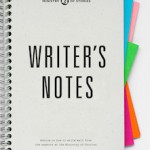Where do you try out your ideas? Authors don’t just start writing on Monday, and a few months later type The End! Long before they fire up the old computer, or pull out that yellow, lined pad to write Chapter One, and all along the way, they’re testing ideas, following a plot line to see if it logically works, doing the background work on weapons, chemicals, laws, or police procedure to see if what they want a character or murder weapon to do is possible.
“How can I get Anna back to base camp without having the forest fire reach her first?”
“Can I fit this character in?”
“Who should die and how?”
“Which character should my killer be?”
“Do I start with the murder, or build gradually?”
“Will the love interest stick around, or should I have them crash and burn?”
“What if….?”
Excel spreadsheets are a great what-if tool for financial managers. The equivalent for writers is usually a small notebook, journal or folder on their desktop. You need a place to try out your ideas. Nothing has to be in order. Nothing has to make sense…yet.
Keeping a writer’s journal is sort of like thinking out loud on paper. I love this messy, wonderfully creative place. It’s where I decide what to keep, what to throw out, and what research I need to do to answer my own questions. This is where my brain leap frogs around, discovering interesting side trips, sub plot lines, and cool, surprising details that will hopefully entertain readers.
What do these notes look like?
I cut my teeth on the first novel in the series, SHATTERED: Logan Book 1. I quickly became overwhelmed with the amount of information I was accumulating, so I created a Bookmark folder to throw links to websites that had information I know I would need later, but didn’t have time to write copious notes on now. Then I added a Folder to my desktop with Word files containing character backstories, murder weapon ideas, etc. Writing backstories is not only fun, but a great tool for creating intriguing characters with depth. I’ll write more about creating backstories for your characters in another post.
I created a master Excel spreadsheet to begin mapping out what each character was doing each day, particularly around the time of the murder, even though I won’t put what each character did in each chapter. Knowing where everyone was and what they were doing helps me to determine alibis, motive, and opportunity.
This spreadsheet became the backbone I would refer to and continue to build as I wrote the book. I’m a loose plotter – sort of organized, but willing to change the whole story if I discover a better angle as I write. I always throw a couple of pieces of paper and a pen in my purse or pocket – you never know when you’ll hear some great dialogue, or a snippet of an idea will come to you, or you’ll see a person at the restaurant you simply HAVE to turn into a character at some point.
One of my favorite authors from way back one, who is still in the game, generously shares some of her journal – hashing out of ideas as she wrote some of her books. Here’s the link for some of her notes on G is for Gumshoe: Sue Grafton’s Writing Journal.

 A self-admitted book addict, Valerie was the kid with the flashlight under her pillow. A life of travel with exposure to many different cultures led to a pervasive interest in people, with degrees & teaching credentials in Cultural Anthropology & English.
A self-admitted book addict, Valerie was the kid with the flashlight under her pillow. A life of travel with exposure to many different cultures led to a pervasive interest in people, with degrees & teaching credentials in Cultural Anthropology & English.